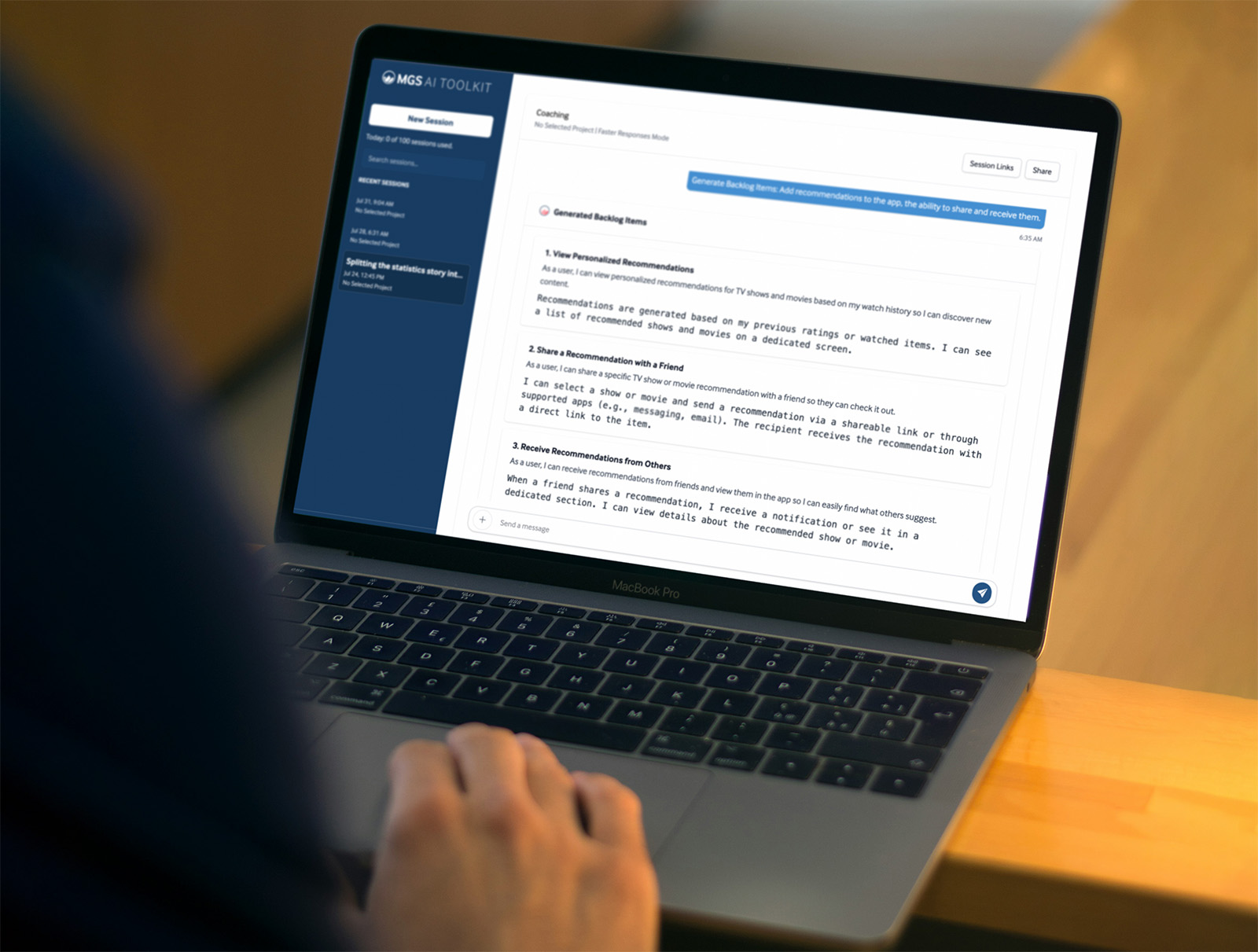What You'll Be Able to Do
Understand how Product Owners and Business Analysts collaborate effectively.
Use story maps to visualize workflows, uncover gaps, and set priorities.
Leverage AI to refine and improve stories and acceptance criteria.
Why Choose Better Backlogs?
You’ll learn to write clear, valuable user, job, and technical stories, split and prioritize backlog items, and define strong acceptance criteria that align work with business goals.
The course includes AI exercises to split stories, improve quality, and practise user interviews with an AI persona built from realistic prompts. You’ll receive a PDF of the class prompts, including those used to simulate user interviews, so you can apply the same techniques in your own backlog work.
By the end, Product Owners and Business Analysts will collaborate more effectively and make smarter product decisions that drive lasting value.
A Unique, Interactive Learning Experience
Team Home is a collaboration platform that we designed for our courses. It is optimized for live, online training. Participants benefit by collaborating in ways beyond what is possible with generic whiteboard software such as Mural or Miro. Instructors can observe activity across all rooms, improving the effectiveness and efficiency of exercise debriefs.

Access Our Resources, Planning Poker® and AI Toolkit
Expanded access to MGS Essentials, included with your trainining, is your toolkit for doing agile better, with resources that help you and your team move faster, plan smarter, and deliver more value.
Access live events, video lectures, and a powerful set of tools including online Planning Poker®, the Elements of Agile assessment and AI tools for coaching, story splitting and backlog item generation.

Upcoming Public Training
Course Includes:
Course Outline
Scrum Refresher
- Scrum terminology
- Roles, and boundaries
The Product Owner and Business Analyst Roles
- Understand what makes an effective Product Owner and Business analyst
- Role Responsibilities
- How the roles overlap
- How they work together
Visioning
- How to craft a crisp, compelling, concise vision
User / Job / Technical Stories – What & Why
- Introduce difference between user, job, technical stories
Story Writing & Story-Writing Workshops
- How to run story writing workshops, when to write, how to write good stories
Story Mapping & Organizing the Backlog
- Use story maps to visualize flow, dependencies, and gaps
Splitting Stories & Adding Detail
- Techniques for progressive elaboration; splitting large stories using SPIDR
Acceptance Criteria, Definition of Done, Nonfunctional Requirements & Bugs
- How to specify “conditions of satisfaction,” how to treat nonfunctional requirements and bugs (versus stories)
Prioritization
- Approaches to prioritization, stakeholder alignment, trade-offs
Got a Question?
What happens when you contact us?
- We’ll get back to you within a day.
- Answer your training questions and discuss any custom needs.
- Recommend the best agile training path for your teams and goals.
- Want to talk to someone? Schedule a call.
